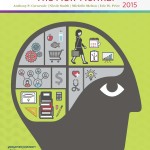Research: Students Are Employed While Enrolled
By Ellen Ullman
November 20, 2015
Georgetown’s Center on Education and the Workforce recently released a new report about the rise of working learners. What does this mean for community college students?
 In Learning While Earning: The New Normal, a new report from Georgetown University’s Center on Education and the Workforce, the authors conclude that working while learning is now the accepted pathway for both young and mature college students.
In Learning While Earning: The New Normal, a new report from Georgetown University’s Center on Education and the Workforce, the authors conclude that working while learning is now the accepted pathway for both young and mature college students.
As the report notes, “For decades, the popular conception of a college student in this country has been the full-time residential financially dependent student who enrolls in a four-year college immediately after graduating from high school. But that student has not been the norm at U.S. postsecondary institutions for more than 30 years.”
Today, nearly 14 million people — 8 percent of the total labor force and a consistent 70–80 percent of college students — are working while formally enrolled in postsecondary education or a training program. According to Nicole Smith, chief economist at the Georgetown Center and a co-author of the report, two out of five community college students are working between 26 and 39 hours a week. “That’s a really significant number of students working close to full-time hours while enrolled,” she says.
Supporting employed students
Smith says that many of the ways to accommodate working students were pioneered by community colleges, such as promoting greater connectivity between classroom and workroom. “The idea that we ought to better connect curriculum with employment is what community colleges are known for. It’s part of their mission,” she says. The center advocates for earlier career-based counseling to help students streamline connection with the workforce.
Community colleges can also promote employment-based metrics. “How successful are your students after they graduate?” asks Smith. “If you say that you prepare your students for the world of work, and that you’ll get them a job, it’s important to prove that, and further prove that the job pays a reasonable wage.” The center believes that employment-based funding can provide an important incentive for institutions to pay more attention to student outcomes after graduation.
Another thing community colleges can do to make life easier for working students is to have more oversight on internships, whether they are paid, unpaid, supervised or not. “An internship can be a foot in the door for an opportunity later on, and colleges need to make sure students are not being exploited,” says Smith. “Students who intern have to demonstrate that they gained skills, made contacts and understand the culture of the firm, which — taken together — might help them land a job once they graduate. That process should matter more.”
Last but not least, Smith says colleges should continue to emphasize competency-based training. This approach, established by community colleges, is characterized by mastering one particular set of tasks before moving on to the next. By the time you graduate you’ve demonstrated that you are 100 percent able to perform these tasks and have done so much more credibly than, say, someone who has only taken an exam to prove competence.
Community colleges are known for understanding their students’ unique characteristics, another thing Smith praises. She suggests paying even more attention to the timing of classes. It’s difficult to go to a compulsory class at noon when you work. Providing day care or increasing the amount of night classes can alleviate the challenges of working parents and single moms.






